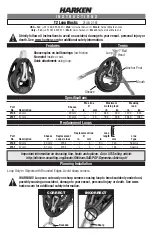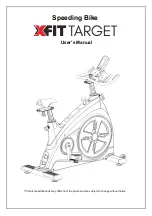
Laboratory Centrifuge Sigma 6-16S
3 Safety
18 / 91
Version 07/2012, Rev. 1.22 of 08/05/2020
• sb
Translation of the original operating manual, part no. 0702002
→
3.6
Safety instructions
3.6.1
Electrical safety
To reduce the risk of electrical shock, the centrifuge uses a three-wire
electrical cord and plug to connect the equipment to earth-ground. To
preserve this safety feature:
DANGER
• Ensure that the wall socket is properly wired and grounded.
• Check that the mains voltage agrees with the nominal voltage listed on
the name plate.
• Do not place vessels containing liquid on the centrifuge lid or within
the safety distance of 30 cm around the centrifuge. Spilled liquids may
get into the centrifuge and damage electrical or mechanical
components.
• Only qualified and specialised personnel are authorised to perform
service tasks or repairs of the electrical system for which the housing
needs to be removed.
• Inspect the electrical equipment of the unit regularly. Defects such as
loose or burnt cables must be eliminated immediately.
• Following the completion of any type of repair or service, the qualified
and specialised personnel must perform final inspection and testing in
compliance with the relevant standards.
→
3.6.2
Mechanical safety
In order to ensure the safe operation of the centrifuge, observe the
following:
WARNING
• Do not open the lid when the rotor is in motion!
• Do not reach into the rotor chamber when the rotor is in motion!
• Do not use the centrifuge if it was installed incorrectly.
• Do not use the centrifuge without panels.
• Do not use the centrifuge if the rotors and inserts show signs of
corrosion or other defects.
• Only use the centrifuge with rotors and accessories that have been
approved by the manufacturer. In case of doubt, contact the
manufacturer (see chapter 7.3 - "Service contact").
• Do not hold your fingers between the lid and the housing when closing
the lid. Risk of crushing!
• Defective lid relieving devices could cause the centrifuge lid to fall
(contact the service department, if necessary). Risk of crushing!
• Do not hit or move the centrifuge during its operation.
• Do not lean against or rest on the centrifuge during its operation.
• Do not spin any substances that could damage the material of the
rotors and buckets of the centrifuge in any way. Highly corrosive
substances, for example, damage the material and affect the
mechanical strength of the rotors and buckets.
• Stop the centrifuge immediately in the event of a malfunction.
Eliminate the malfunction (see chapter 7 - "Malfunctions and error
correction") or inform the service department of the manufacturer (see
chapter 7.3 - "Service contact").
















































